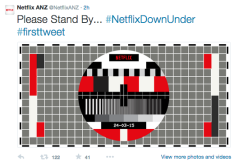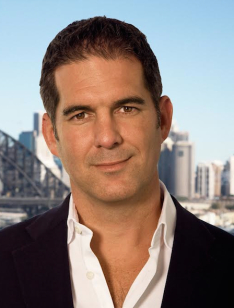The telco ‘triple play’ wars and not subscription video services will reshape the media landscape
 Last November Nic Christensen looked at how the new streaming services were just part of a larger war between the telcos. With Optus taking the English Premier League rights from Fox Sports today we revisit it, and how it has played out so far.
Last November Nic Christensen looked at how the new streaming services were just part of a larger war between the telcos. With Optus taking the English Premier League rights from Fox Sports today we revisit it, and how it has played out so far.
Brace yourself, a media winter is coming.
But it’s not the impending streaming war between Presto, Netflix and newly minted Stan that you’ve been hearing so much about that will redefine the Australian media landscape, but rather what sides the various media companies fall on.
The prospect of Netflix officially arriving on our shores has had consumers and the media salivating over the idea of a battle for the best and cheapest video streaming offering. The impending arrival of the US streaming giant has forced the traditional media companies to come to the table, with Foxtel rolling out Presto as it seeks to preserve its pay-TV dominance, and Nine Entertainment and Fairfax’s Stan seeking to carve out its piece of the burgeoning subscription-video-on-demand (SVOD) market.
But to industry insiders the headlines and consumer buzz about these services has missed the bigger point – the realignment of Australian media around the distribution platform of the future, which will be delivered by Australia’s telcos.
The biggest telco, Telstra, has already picked sides courtesy of its 50 per cent ownership of Foxtel with News Corp. And while the likes of Optus, iiNet, and Dodo support Foxtel rival FetchTV, it is far from clear where the likes of Nine, Fairfax, Seven and Ten amongst others will fall.
But these streaming offerings will just be the honey in the trap for the telcos looking to lure consumers into the more lucrative ‘triple play’ offerings, bundling phone, fixed internet and pay-TV services together. And the first shots in this war were actually fired on Monday.
Streaming: The winners will be the best and biggest marketers
Talk to those in the streaming space and the preparations for battle have been going on in earnest for some time.
While the financially troubled Quickflix has operated for some time with limited penetration, most observers cite the confirmation by Nine last December that it would enter the SVOD space as the move which really started the manoeuvring in earnest.
Nine’s announcement saw Foxtel accelerate its plans for movie streaming service Presto, which launched in March. News that US streaming giant Netflix was talking to local distributors in June added to the sense of urgency.
While Presto might have been the first of the traditional media company plays to make it to market in Australia, its boss Shaun James is under no illusions about the intensity of competition that is about to emerge: “We have three very determined offerings about to enter the market – we are up and running and the others are coming,” he said.
The reality is while Presto might be the first to officially launch, Netflix had long since gained a head start by allowing an estimated 200,000 Australian subscribers ‘back door’ access to its US service via virtual private networks (VPN) to overcome a US geo-block.
“What is driving VPN use is the appetite for a low price point IPTV SVOD service,” says Megan Brownlow, editor of PwC’s Australian Entertainment and Media Outlook report.
When we built our forecasting model we used the 200,000 figure, which had some informal verification from Netflix. Subsequent to that we had another bit of intel from Netflix that this was too low.”
Brownlow predicts while there has been a focus on the content side of the battle – Presto with HBO shows like Game of Thrones, Stan with Better Call Saul and Netflix with Orange is the New Black amongst others – the marketing arena is where customers, and dollars, will ultimately be won and lost.
“This will be a marketing war not just a content war,” she says. “It’s going to be a marketing war and the winners will be the best and biggest marketers. That is why I think it is so interesting having Nine Entertainment in the mix because Nine has a long history of really working marketing economies well. Foxtel are brilliant marketers too because they have had to play defensively.”
StreamCo CEO Mike Sneesby says he is under no illusions how important marketing will be to its survival in the space. “We want hundreds of thousands (of subscribers),” he said, following yesterday’s media conference announcing its consumer brand name Stan. “We have said three to five years is the timeframe, but it does come down to what happens in the competitive landscape.”
Netflix did not respond to requests for comment, but Presto’s James said he did not believe it would take years for the SVOD battle to play out.
“It will be interesting to see how it plays out in the next six to 12 months,” says James. “I do think it will be that quick – we will have a good indication in the next year, depending on when the others launch of course, but consumers will make a decision about the content within the services, the consumer interface, pricing etc.”
One thing is clear: few people believe the Australian SVOD market is big enough for three, let alone four players if you include Quickflix, whose share price hit a record low this week. It is interesting to note that when the likes of Presto or StreamCo talk about the streaming market they usually only refer to three rivals – Netflix, Presto and Stan.
How the combatants are aligning
Fetch TV CEO Scott Lorson points to “two discrete battles taking place in Australian media.”
The IPTV service pitches itself as a ‘Foxtel-lite’ offering limited pay-TV channels for lower prices than its rival. It is backed by the deep pockets of Malaysian parent Astro All Asia Networks and sold through major ISPs such as Optus, iiNet and Dodo.
He explains: “There are two distinct competitive environments emerging – one is the platform play which is all about the full pay-TV platform, which is the battle between Foxtel versus Fetch TV and our associated partners. And then you are also seeing a separate battle emerge for over-the-top (OTT) all you can eat SVOD services emerge. All of which will be about competing with Netflix in this market.”
This emerging battle has produced some serious media posturing from various parties in the last year, as almost every major media player moved to find a partner or ally.
While many column inches have been dedicated to the $100m tie up between Fairfax Media and Nine Entertainment with StreamCo, there is also speculation the biggest free-to-air network Seven West Media will strike a deal with Foxtel’s Presto service, before it flicks the switch adding TV content to the service in the coming months.
Seven CEO Tim Worner was also a surprise guest at last week’s Foxtel upfronts, with Presto’s James refusing to be drawn on the detail of any imminent announcement saying only “we will announce in due course.”
That deal would see the biggest free-to-air network, pay-TV operator and telco all on the same side.
On the opposing side there could also be what is described as “everyone who’s not Telstra and Foxtel”, aligning with the likes of Optus, iiNet, and M2’s Dodo in an alliance with Fetch TV, a clear attempt to counter the massive market power and might of their major rival alliance.
That leaves Network Ten as the only company without a dance partner. While the troubled network is nominally the only one not to in some way signal its intent, speculation is growing that Discovery Communications is weighing up a bid for the network with Foxtel, aligning it with the Foxtel/News Corp camp.
PwC’s Brownlow says that many of the media/telco partnerships make sense. “In terms of that type of alignments we are seeing, I think it is really logical and really healthy because we are in a different world now where the distribution is often global and we are up against global competitors,” she explains.”When we look at the market in the future it is going to be critical to have scale via partnering.”
The difference in the money involved in the two elements is huge. The average earnings before interest, tax, depreciation or amortisation on a fixed Australian landline bundle is thought to be in the order of $30 a month, well above the $10 per-subscriber revenue on offer in the SVOD war. And that’s before you factor in the high cost of content deals, churn upwards of 50 per cent, and the high cost of acquisition through marketing.
Speaking to Mumbrella yesterday, Lorson noted that he would welcome SVOD players into his ecosystem but made clear he was focused on the wider telco war.
“The stakes are enormously high in that (telco) battle, given the strong profitability of fixed line telephony services, and the importance of TV as a hero proposition in a bundle,” he said. “We are built exclusively for that battleground and that’s where our focus lies.
“We have spent five years and invested $100m to establish our strong strategic position currently, and we are now an incredibly viable and well positioned business. We see lots of competitors in adjacent markets that are just commencing that process but we do acknowledge that there will be plenty of casualties along the way.”
The ‘triple play’ telco war has already started
Last Monday saw the opening round of the conflict, with Foxtel implementing its biggest ever price cuts, halving the entry price to $25 and expanding the number of channels in the basic package. On the same day Telstra expanded its triple-play offering to include 40 Foxtel channels from 13, at a price point of around $100. Meanwhile Optus introduced an entertainment bundle aggressively priced at $75.
All of the price changes are likely to be supported with big marketing spends.
“We believe the starting pistol was fired last Monday,” explains Lorson, who argues his brief from his telco partners is to ensure he grows his 140,000+ subscriber base by offering a “hero proposition” for their bundles in order to compete with Foxtel.
If you go to the Telstra, Optus, Foxtel or Dodo website as of Monday you are seeing an entirely different level of aggression than you have seen previously.
“From a FetchTV perspective our brief from our partners is to develop a compelling consumer proposition that allows them to bundle and win share. That is what we are built for.”
Fetch TV is not alone, with Presto boss James signalling that not only is pay-TV operator Foxtel cutting its price, but also actively considering putting Presto into the wider triple play bundle.
 “In the last 72 hours we have seen the launch of the largest pricing and packaging change with the overall platform,” said James. “We have now a great value product with the $25 entry.
“In the last 72 hours we have seen the launch of the largest pricing and packaging change with the overall platform,” said James. “We have now a great value product with the $25 entry.
“We have been doing a lot of work to go to market and it is not an unusual thing to see SVOD products bundled with other services like broadband and other services. There are plenty of other examples of that in other markets.”
Such a move could be decisive in the SVOD battle, potentially putting Presto into the homes of Foxtel’s 2.5m subscribers. “It is an option and is certainly something we are looking at at the moment,” says James.
PwC’s Brownlow argues that the triple play strategy makes sense on all sides, but both the SVOD war and the wider telco war will put major pressure on average revenue per user (ARPU) for both the telco players and cash-cow Foxtel, which currently has one of the highest ARPUs in the world for a pay-TV provider at just under $100.
“There is going to be significant pressure,” says Brownlow in relation to Foxtel’s ARPU. “But I think they have come to terms with that and recognise that those days of (high ARPUs) are over.”
“Triple play will be a great defensive strategy for Foxtel to reduce churn and worldwide we know that that is what triple play does.
“So when we look to the US market where the pureplay cable businesses are really suffering from ‘cord cutting’ (consumers unsubscribing) the beneficiaries have been those vertically integrated businesses – the telcos, who also have media and who are the ones offering triple play.”
Who will survive and what happens next?
It is difficult to know who will win either the SVOD war or the wider triple play telco war, but there will be casualities, and there is already the smell of blood in the water.
But it is clear however that many of the players are already seeking to capitalise on the misfortune of others to limit their losses. As Mumbrella revealed in July, Nine’s decision to buy eight percent of rival Quickflix from HBO appears to be a strategic play, spending $1m for preference shares that give them first rights on content should the company once again experience cashflow problems.
Since July Quickflix’s market capitalisation has fallen from $17.8m to just $9.14m and on Tuesday the share price hit a record low of 0.005 cents.
Yesterday Quickflix chairman Stephen Langsford sought to put the best spin he could on its performance, echoing previous statements welcoming new competitor Stan to the market, and noting Quickflix was positioned in a growth sector.
“It probably is (a record low share price),” said Langsford, “but I think we are most definitely in a growth sector and secondly yes there are big players, but just because they are big doesn’t mean they will execute well.”
Perhaps, but both Presto and Stan appear to be ready to make life very, very hard for Quickflix.
Foxtel’s new HBO content deal, flagged at last week’s 2015 Upfronts, will apply to Presto, and has the potential to deny Quickflix key content. Yesterday Presto’s James was reluctant to be drawn but noted: “What Richard (Freudenstein – Foxtel CEO) said at the Upfronts was that we had secured a deal with HBO. That deal extended across all the Foxtel services of which Presto is one. We will announce titles shortly.”
Quickflix insists that any exclusive deal will not impact it access to key franchises such as Games of Thrones, but the move will be an important one to watch. “We still have HBO content we expect to continue with HBO content,” said Langsford.
There is also the small issue of the massive marketing war chests of the SVOD and telco players. StreamCo boss Sneesby said yesterday:
It is a content and marketing game we will go head to head on acquiring content and we will go head to head on marketing”.
Presto’s James is also not shy about a looming marketing tsunami, saying: “I think there is an education piece as well and there is plenty of evidence that says domestic content offerings are successful and we certainly feel that way about Presto.”
Some in the industry have described Presto as a “head on a pike”, a message from Foxtel to the likes of Netflix it is prepared to ramp up its offering should they come to Australia, but not before, in order to avoid cannibalising its existing pay-TV business.
It is an analogy James takes as a compliment. “I think it is a pretty extreme description,” he said, “but I think it is a recognition that Foxtel is responding to the different ways consumers are choosing to consume content.”
In the telco battles the challenges facing all the players are similar, argues Fetch TV’s Lorson who says SVOD may help them win the wider war.
“This whole thing is about developing a compelling consumer proposition that allows them to bundle and win share,” he said.
“For us we see SVOD as one of many services that people may choose to access and as such as an ecosystem platform to integrate third party services and make them available via FetchTV.”
PwC’s Brownlow is reluctant to pick winners, but acknowledges a lot of money is about to be spent in a battle for supremacy, as all sides jockey for their share of a growing pie.
“When you talk about the ‘war’ it’s going to be a marketing war and the winners will be the best and biggest marketers,” she says. “For sure the media will be swept along.”
“The growth will be in IPTV. I have no sense of who is going to win. But because the pie is growing and everything is shifting to the internet more Australians will take a subscription television service.”
The battle lines are being drawn. The ability to market services effectively and acquire the best content will eventually determine who stands, and who falls.
This piece was originally published on November 6 2014.
Postscript – March 24
 Today the marketing wars formally commence with the arrival of US streaming giant Netflix into the Australian market.
Today the marketing wars formally commence with the arrival of US streaming giant Netflix into the Australian market.
The company is rumoured to have a $30m marketing budget and will be using its new alliance with FetchTV and its telco partners Optus, iiNet and Dodo to massive effect.
Fetch TV CEO Scott Lorson told Mumbrella: “From today consumers will see activity from FetchTV and from our partner ISP Optus and iiNet promoting the Netflix service.
“The total aggregated spend will be in the tens of millions.”
Over the last few months the media landscape has continue to align in preparation for the US streaming giant. In particular Seven West Media throwing its hat in with Presto.
One central issue that has emerged is the importance of unmetering of content to ensure that consumers do no hit their internet caps. Telstra announced it will uncap data for Presto users – unsurprisingly given it has an interest in the service through Foxtel – while Optus and iiNet have made it clear they will uncap Netflix.
These alliances have left Stan with few options, but it has struck a partnership with Vodafone, which does not have a home-TV service in Australia or offer fixed broadband services here. So far it has not signalled it is unmetering access to Stan on mobile devices.
“Australians are very alert to their data consumption because data costs are still quite high here. As we watch more video online it’s an attractive competitive advantage to offer that content unmetered. Fetch does it, Presto does it, now Telstra is offering it for their T-Boxes,” said PWC’s Megan Brownlow. “It’s a smart move.”
One thing which is clear is the deals coming to market are just the beginning, with Stan boss Mike Sneesby telling Mumbrella that its deal with Vodafone was just the beginning, and didn’t prevent them from doing deals with other ISP or players like OTT platform FetchTV.
“The partnership with Vodafone, which we haven’t revealed all the details to the market yet, we are really confident in the strength of that partnership both for us and them,” said Sneesby. “However, it certainly doesn’t prevent us from working with other ISPs. I don’t have anything specific to announce on that front – we are not isolated or prevented from further deals in the ISPs space.
Nic Christensen is the deputy editor of Mumbrella







Great piece, nice one Nic
User ID not verified.
ditto that; good stuff.
User ID not verified.
Two’s company, three’s a crowd, four’s a messy end for someone!
User ID not verified.
Excellent article Nic. Having seen this play out in the UK, I’m fascinated by the battle here.
User ID not verified.
Absolutely sensational (in a good way!) overview of the current SVOD landscape. Better than anything else I’ve read on the sector in the past 12 months. Well done Nic.
User ID not verified.
It’s actually quite humorous that Presto and StreamCo don’t refer to Quickfix as a rival—notwithstanding that Quickflix has vastly more streaming customers and more devices in market than both of them combined. Isn’t Presto customer numbers only about 3,000? Aren’t the so-called big guys conflicted because they’re defending traditional businesses and now have to play catch up?
Also the rumour is Fetch 140K “subscribers” is mostly made up of people who use the stb as a DVR. The actual number of customers using it for on demand movies and TV is pretty small.
User ID not verified.
Quality (i.e. interesting and well written) and insightful journalism with an opinion not just a PR announcement…hurrah! Well done Nic.
User ID not verified.
I’m intrigued Spike
So if Fetch’s 140k subscribers “is mostly made up of people who use the stb as a DVR”, but “the actual number of customers using it for on demand movies and TV is pretty small”, what the hell are they recording on their DVRs?
User ID not verified.